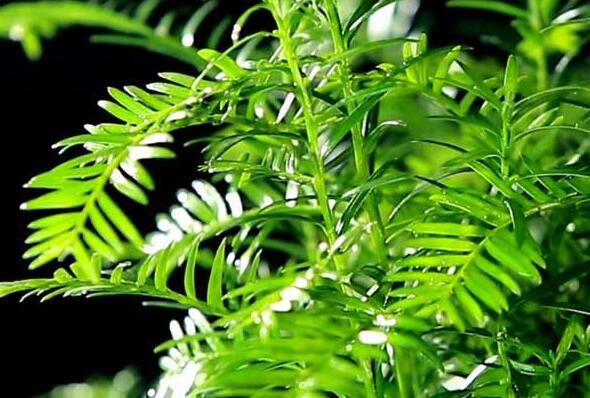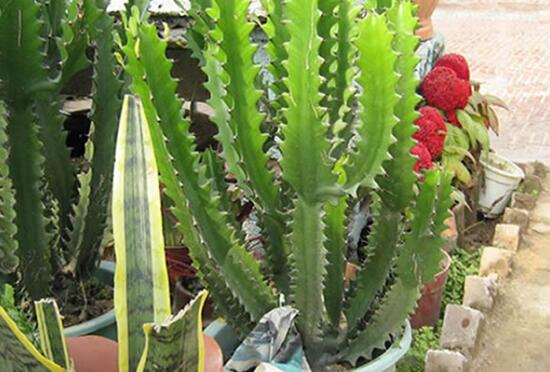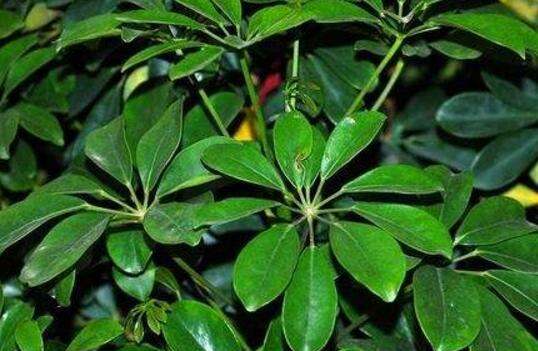How to propagate the yew, the propagation method / cutting or sowing of the yew can be used.
The growth of Taxus is relatively slow, its regeneration ability is weak, but after artificial cultivation can improve its growth rate, at the same time, we can use the correct reproduction method to plant more yew. So how does the yew breed? The general propagation methods of Taxus include sowing and cutting. the following two methods are introduced in detail.
How to reproduce Taxus chinensis
1. Cutting techniques of Taxus mairei
1. Cutting time

Cutting is the most commonly used propagation method of yew, because the growth time of Taxus is from February to November every year, and cutting often needs to select branches from the growing plants, so the cutting time is generally from May to June. At this time, the temperature is suitable for rooting after cutting.
2. Operation method
⑴, first of all, to select branches from the 1-4-year-old yew, need to ensure that the branches grow more robust, there are no yellowing branches and leaves above. Cut off the branch and cut it into small segments 10-30 cm long. Pay attention to keeping the incision smooth. The lower incision is preferably in the shape of a Mal.
⑵, then remove 2/3 leaves under each branch, and then soak the lower incision with rooting powder for 3-12 hours. Rooting powder can choose ATP, ABT, NAA, IBAA and so on, which can improve the survival rate.
⑶, in the process of soaking branches, we can configure the substrate for cutting, which is usually made of sand, sawdust and perlite. After soaking, the branches are naturally dried in a cool place, and then cut in the prepared substrate.
⑷, and finally, maintenance management. Put the flowerpot after cutting in a cool and ventilated place, water it thoroughly and cover it with plastic sheeting to avoid direct sunlight, keep the temperature between 20 and 30 degrees, then keep the soil moist for 30 to 40 days, and then carry out normal management according to the culture method of yew.
2. Taxus mairei sowing and propagation
1. Time
The seeds are usually sown in early spring, but the seeds are collected in October every year, and the seeds need to be stored for a year before they can germinate more easily.
2. Operation method
⑴ and late October are the fruit ripening period of Taxus mairei. Picking the crimson fruit and harvesting the seeds and storing them with wet sand for one year can improve the germination rate. When sowing, soak the seeds in 0.2% potassium permanganate solution for 10 minutes for disinfection, then wash them with clean water to dry.
⑵, sow the dried seeds evenly on the sand bed, cover the seeds with sterilized loam, then pay attention to watering and shading, shading must be more than 60%, pay attention to maintenance and management, prevent the seedling bed from being drenched by wind and rain, and the emergence rate can reach 70%.
How does the yew breed? Cutting Propagation techniques of Taxus cuspidata
Taxus is a precious greening tree species in China, its leaves are evergreen all the year round, and its trees are excellent wood and have very good planting prospects. The following editor will tell you about the cutting propagation skills of Taxus mairei, hoping to be helpful to the growers.
1 sowing and propagation techniques
1.1 seed collection
The seeds of Taxus cuspidata generally mature from late September to early October and need to be picked in time after maturity. In the time of seed maturity, the mature mother plant with strong growth and free of diseases and insect pests was selected. after collecting the seeds, the red aril on the surface was washed with water, washed clean, soaked and stored in wet sand. The seed of Taxus chinensis var. mairei has a long post-ripening period and has the characteristic of double dormancy, so it needs two winters and one summer before it can germinate.
1.2 Land selection and preparation
Taxus cuspidata likes moist, but afraid of waterlogging, like shade, extremely shade-resistant, the main root is not obvious and the lateral root is developed. Therefore, generally choose the land with loose and fertile soil and convenient drainage and irrigation, or under the Korean pine forest or coniferous and broad-leaved mixed forest with low planting density. After selecting good seedling land, ploughing should be carried out at a depth of 30 to 35 cm. Then base fertilizer was applied, mainly rotten agricultural machinery organic fertilizer, the application amount was about 1000 kg/667 m ~ 2, and the land was raked flat after fertilization.
1.3 seed treatment
About half a year before sowing, soak the seeds with 0.5% potassium permanganate solution for 40 min, rinse them with clean water for 2 times, and mix them with fine sand in the proportion of 1 ∶ 3. First, spread the seed bag on the wet sand, and then cover it with a layer of wet sand and bury it with soil. The seeds were taken out 15 days before sowing in the spring of the following year and spread out in the leeward and sunny place, often turned over. Soak the seeds with gibberellin 500 mg/L for 24 hours 2 days before sowing, then rinse them with clean water for 2 or 3 times before sowing.
1.4 sowing
Taxus mairei is generally in the form of strip sowing or sowing. Sowing time is generally in early May, watering before sowing to make the land drenched. Sow directly during sowing, then cover the soil for about 1 cm, and then suppress it a little. During strip sowing, the furrow was opened first, the width of the ditch was about 5 cm, the depth was 2 ~ 3 cm, and the distance between furrows was about 20 cm. The seeds were sown in the ditch and then covered with soil.
1.5 Seedling stage management
When the seedlings are all out, they need to be watered in time. Loosen the soil and weed in time after rain to ensure that the soil is loose. When the seedlings grow to 2-3 leaves, interseedling should be carried out in time. In the first year of sowing, there are generally 2-3 times of fertilization, mainly nitrogen fertilizer and potassium fertilizer, foliar spraying. After growing for 2 or 3 years, the seedlings can be planted in the nursery.
2 Cuttage propagation technique
2.1 Collection and treatment of cuttings
In the middle of March, the middle-aged varieties with strong growth and no diseases and insect pests were selected as the mother plant to collect cuttings [2]. The cuttings are usually new shoots growing within one year, and the collection length is 10-15 cm. After harvesting, the cuttings should be stored at a low temperature, with-5 ℃. The base of the cuttings should be covered with 60% wet sand to keep moist and isolated from the sun.
2.2 cutting time
Cutting at the right time can greatly improve the survival rate of Taxus. When the deep soil temperature is more than 10 ℃ and the indoor temperature in the greenhouse is more than 15 ℃, it is beneficial to promote the cell division at the incision and take root and survive as soon as possible. Therefore, the cutting time can be determined according to the local temperature change in the same year.
2.3 plug-in preparation
The cutter can be prepared about 7 days before cutting. the cutter is generally 1-1.2 m wide and 20 cm high, and the length is determined according to the actual length of the plot. First, spread a layer of mature farm organic fertilizer at the bottom of the slotting bed as the base fertilizer. In order to reduce the occurrence of diseases and insect pests, a certain amount of dimethazone or carbofuran can be added to the base fertilizer, and then a cutting substrate with a thickness of 8-10 cm, which is composed of rotten sawdust, garden soil and fine river sand in the ratio of 3 ∶ 2 ∶ 1, can be added to the base fertilizer.
2.4 Cuttage
First, cut off the leaves of about 5 cm at the base of the cuttings, and then cut off 1-1.5 cm of the lower incision to promote rooting and retain the terminal bud. The cuttings can be cut after soaking in the solution of rooting powder. When cutting, the sharp stick was used to pierce the hole, the depth of the eye was 4 ~ 5 cm, and the row spacing of cutting seedlings was about 10 cm × 10 cm. After cutting, the root soil is compacted and watered.
2.5 Management after cutting
On the one hand, it is necessary to keep the temperature in the greenhouse at 15: 25 ℃; on the other hand, it is necessary to maintain adequate ventilation and more than 80% air humidity. If the temperature is high, it can be properly sprayed to cool and moisturize; if the temperature is low, the ventilation time can be reduced appropriately. Weeds should be pulled out in time. Generally, it takes about 1.5 to 2 months to take root and survive. If properly managed, the survival rate can reach 80% to 90%.
After survival, it can be transplanted and planted after growing in the nursery for about 2 years. In the second year after survival, the thermal insulation facilities need to be removed and fertilized according to its growth to cultivate strong seedlings.
There are two kinds of breeding techniques for yew, which can be sown and propagated or cut. According to the editor, according to the ornamental, medicinal, and economic value of the yew, it is currently planted in many areas of our country. If you want to plant green seedlings, you can consider planting yew. The above is about its reproductive skills, you can learn from.
How to Cuttage Propagation of Taxus
Propagation methods of Taxus mairei
Taxus can be propagated by sowing, but this method of propagation is relatively slow, and the growth cycle of Taxus will become very long. So when breeding yew, in order to cultivate a yew more quickly, we often choose the method of cutting to breed yew.
Methods of cutting Propagation of Taxus mairei
We usually choose to carry out the cutting propagation of Taxus between May and June of the year. First of all, we have to choose a 1-year-old 4-year-old yew, cut off a section of woody branches of about 10 centimeters, remove about 3/2 of the leaves at the lower end, and soak the cut end of the branches in a solution made of rooting powder for about three to 12 hours. The soil in which we cultivate yew should choose sand, perlite and other rough soil as cutting soil, plant the treated yew cuttings into the cutting soil, and then cover it with plastic sheeting and other things, pay attention to no strong light exposure, spray water two or three times a day, water can be reduced to once a day after a month, the soil temperature can be kept at 20 ~ 30 °C. Under normal circumstances, it will take root in 30 or 40 days. At this time, we can apply a little fertilizer to promote the growth of yew seedlings. After the seedlings take root, they can be transplanted to ordinary soil for planting.
- Prev

How to propagate keel flower, the cutting method of keel flower / spring cutting and winter flowering
Dragon bone flower, a kind of plant that can produce dragon fruit, is highly effective, not only good-looking, but also edible and medicinal, so it is deeply loved by flower friends. In life, many flower friends raise a pot of keel flowers at home, but do you feel monotonous? If so, you might as well breed a few more pots, as for how to reproduce keel flowers.
- Next

How to cut duck foot wood, the cutting method / cuttage production is the key point.
Duck foot wood is a kind of fast-growing plant. When raising it, we should not only understand the breeding method of duck foot wood, but also master its breeding skills in order to make the alternation of new and old plants. In the reproduction of duck foot wood, the most common thing is cutting, so how to cut it?
Related
- Fuxing push coffee new agricultural production and marketing class: lack of small-scale processing plants
- Jujube rice field leisure farm deep ploughing Yilan for five years to create a space for organic food and play
- Nongyu Farm-A trial of organic papaya for brave women with advanced technology
- Four points for attention in the prevention and control of diseases and insect pests of edible fungi
- How to add nutrient solution to Edible Fungi
- Is there any good way to control edible fungus mites?
- Open Inoculation Technology of Edible Fungi
- Is there any clever way to use fertilizer for edible fungus in winter?
- What agents are used to kill the pathogens of edible fungi in the mushroom shed?
- Rapid drying of Edible Fungi

